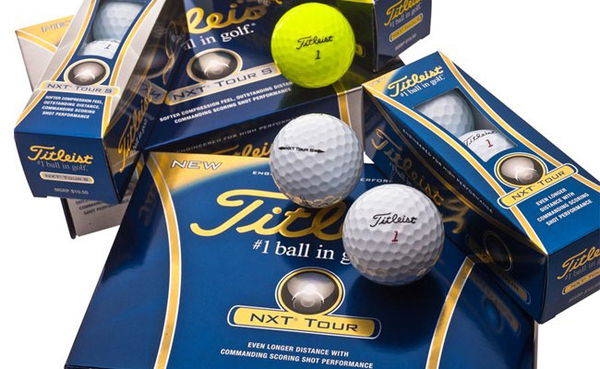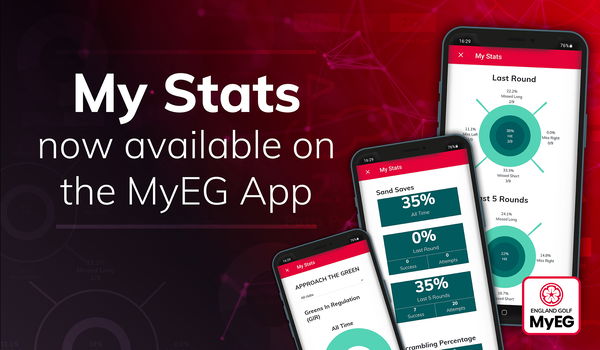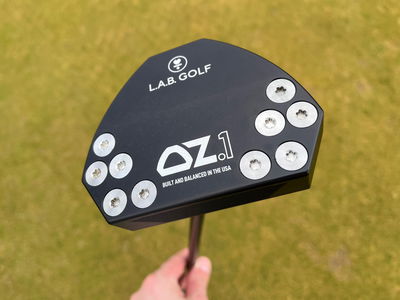Inside story: Titleist ball launch
We get the inside track on the new Velocity balls, as well as the new NXT and DT SoLo range

It’s no secret that many amateur golfers continue to use equipment ill-suited for them. You know, the guys that waltz onto the course with the latest white-headed driver, 64-degree wedge and shafts far too stiff to match their swing? Oh, and let’s not forget those flashy pants. Hang on a sec, that’s me!
The same can be said when it comes to choosing those dimples.
Quick, think of a brand of golf ball? Good answer. If you said something other than Titleist then you must be a very loyal user to that company. Respect.
I know when I’m standing in the pro shop and in need of golf balls - which at the moment, is a very frequent episode - my brain has an uncanny way of telling me to pull out the debit card and opt for that shiny gold and black packaging. Feet follow and suddenly several sleeves of Titleist Pro V1s are resting in the ball pocket.
Yet after attending the official media launch of the new Titleist golf ball models at a Heathrow hotel with Bill Morgan and Mary Lou Bohn from Titleist HQ in California, I realised there are other golf balls in their stable better-suited to compliment my 6-handicap game.
Choosing the correct golf ball is of paramount importance when you consider it’s the one piece of equipment you use on every shot.
So here’s an insight into Titleist’s 2012 NXT Tour, NXT Tour S, Velocity and DT SoLo golf balls, designed to deliver best-in-category quality and consistency, while providing a range of performance and preference options for golfers across every skill level.
“A new engine with new wings,” announced Morgan, who has the role of Titleist’s senior vice president of golf ball research and development, handing me a dozen NXT Tour and NXT Tour S balls.
I was disappointed the ball didn’t actually possess an engine or for that matter wings but I quickly got the point. Trusted by golfers for more than a decade, the NXT Tour has been revamped to deliver even longer distance while retaining its commanding scoring shot performance.
He explained the three-piece ball features a slightly smaller, soft centre with 12.9% less volume, enabling golfers to keep the spin rate down. This in turn, ‘makes the surrounding shell bigger and promotes a higher volume outer core layer for better launch characteristics.’
The octahedron 302-dimple design on the new NXT Tour is similar to the Pro V1, with a soft, thin Fusablend cover that generates ‘a combination of consistently long drives, commanding short game spin and control and soft feel on all shots with excellent durability,’ according to Titleist.
So apart from white and yellow options, what does the NXT Tour S bring to the table?
Morgan told me: “It does everything the same but has a softer compression feel with its highly resilient core, combined with the Fusablend cover.”
He added that both NXT Tour and NXT Tour S balls were tested more than 100 times in a variety of launch conditions at Titleist HQ’s Ball Plant II with results revealing that the NXT Tour flies higher while the NXT Tour S lands softer.
At the launch I learned much about ball compression (that density of the golf ball tells you how hard or soft it is), and was told the NXT Tour sits between a 91 and 96 compression, similar to the Pro V1, while the NXT Tour S is around 75 to 80 compression. The lower the number, the softer the ball.
Several of my golf-writing colleagues were bemused why Titleist was unleashing a bright yellow version - a colour more associated with the driving range than the course.
“It was a choice of public opinion,” replied Morgan, maintaining that the NXT Tour S yellow ball comprises of ‘a fluorescent mint green core, fluorescent yellow/green cover and pearlescent gold coating.’
“In the US, golfers tend to prefer softer, different coloured balls - and 75% want yellow. So that’s what we’ve done,” he said. Whether Europe has similar tastes is yet to be defined.
Click here to learn about Titleist's new Velocity and DT SoLo balls...












